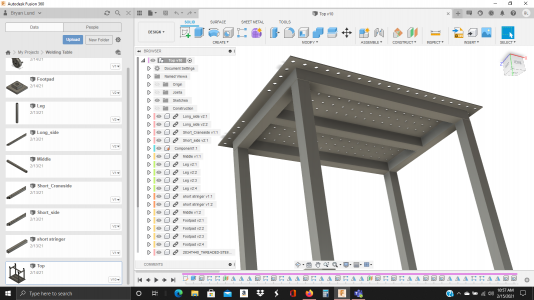- Joined
- Sep 8, 2019
- Messages
- 4,392
Are you going to bevel that 3/16” square tubing for the weld joints for the purpose of full weld penetration? If it were 1/4” or thicker you would need to bevel it.
The 3/16” is .188” so I would use an angle grinder to get about 45° bevel angle & leave about a .030”-.035” land.
I don’t think that I have ever achieved full pen on 3/16” with square (i.e. unbeveled) edges, and I weld crazy hot.
My welding table is on wheels & it is the only table in the shop, so it sees a lot of use as a workbench. I am VERY glad that it is on wheels.
The 3/16” is .188” so I would use an angle grinder to get about 45° bevel angle & leave about a .030”-.035” land.
I don’t think that I have ever achieved full pen on 3/16” with square (i.e. unbeveled) edges, and I weld crazy hot.
My welding table is on wheels & it is the only table in the shop, so it sees a lot of use as a workbench. I am VERY glad that it is on wheels.
Last edited:

